The Influence of Ship Waves on Sediment Resuspension in the Large Shallow Lake Taihu, China
Abstract
:1. Introduction
2. Methods and Materials
2.1. Field Experiments
2.2. Data Analysis Methods
2.2.1. High-Frequency Velocity Components Extraction
2.2.2. High-Frequency SSC Data Calculation
Laboratory Analysis of SSC
High-Frequency SSC
2.2.3. Wave Data Processing Method
2.2.4. Shear Stress in the Near-Bottom Layer
3. Results
3.1. Hydrodynamic Characteristics and Sediment Behaviors Caused by Ship Waves
3.2. Mechanism of Ship Wave-Induced Sediment Resuspension
4. Discussion
5. Conclusions
- (1)
- The ship wave disturbance intensity is greatly influenced by the draft depth, and ship disturbance contributes most of the energy to the horizontal direction rather than the vertical direction, which is manifested by both a longer duration of influence and a stronger turbulence intensity in the horizontal direction.
- (2)
- Compared with the wind-induced wave, the disturbance caused by the ship waves has the characteristics of high intensity, short duration, and narrow influence range.
- (3)
- The maximum total shear stress under ship disturbance can reach 9~90 times the critical shear stress under natural state. At this time, ship waves are the main factor causing sediment resuspension.
- (4)
- Combined with our previous work, the cumulative impact of ship waves on sediment resuspension near the channel of Lake Taihu is much greater than that of wind-induced wave, and may affect the nutrient release and eutrophication in Lake Taihu.
Author Contributions
Funding
Conflicts of Interest
References
- Paerl, H.W.; Huisman, J. Blooms Like It Hot. Science 2008, 320, 57–58. [Google Scholar] [CrossRef] [PubMed] [Green Version]
- Qin, B. Lake eutrophication: Control countermeasures and recycling exploitation. Ecol. Eng. 2009, 35, 1569–1573. [Google Scholar] [CrossRef]
- Qin, B.; Gao, G.; Zhu, G.; Zhang, Y.; Song, Y.; Tang, X.; Xu, H.; Deng, J. Lake eutrophication and its ecosystem response. Chin. Sci. Bull. 2013, 58, 855–864. [Google Scholar] [CrossRef] [Green Version]
- Jain, R.K.; Kumar, A.; Kothyari, U.C. Turbulence statistics of flow through degraded channel bed of sand–gravel mixture. J. Hydro-Environ. Res. 2015, 9, 508–518. [Google Scholar] [CrossRef]
- Li, Y.P.; Pang, Y.; Li, Y. Re-floating fluxes of taihu lake sediment under hydrodynamics. Chin. J. Water Res. 2007, 5, 558–564. [Google Scholar]
- Zhu, G.; Qin, B.; Gao, G. Direct evidence of phosphorus outbreak release from sediment to overlying water in a large shallow lake caused by strong wind wave disturbance. Chin. Sci. Bull. 2005, 50, 577–582. [Google Scholar] [CrossRef]
- Göransson, G.; Larson, M.; Althage, J. Ship-generated waves and induced turbidity in the Götaalv River in Sweden. J. Waterw. Port. Coast. Ocean. Eng. 2014, 140, 04014004. [Google Scholar] [CrossRef]
- Liu, R. Analysis and Research status of Traveling waves of Inland Deep Water Channel Ships. Inf. Syst. Eng. 2014, 4, 131–134. [Google Scholar]
- Xu, X.; Wu, Z.; Zhang, H.; Shi, W. Research status on the effects of inland waterway transport. China Water Transp. 2014, 13, 43–46. [Google Scholar]
- Hofmann, H.; Lorke, A.; Peeters, F. Wind and ship wave-induced resuspension in the littoral zone of a large lake. Water Resour. Res. 2011, 47. [Google Scholar] [CrossRef]
- Schoellhamer, D.H. Anthropogenic Sediment Resuspension Mechanisms in a Shallow Microtidal Estuary. Estuar. Coast. Shelf Sci. 1996, 43, 533–548. [Google Scholar] [CrossRef]
- Rapaglia, J.; Zaggia, L.; Ricklefs, K.; Gelinas, M.; Bokuniewicz, H. Characteristics of ships’ depression waves and associated sediment resuspension in Venice Lagoon, Italy. J. Mar. Syst. 2011, 85, 45–56. [Google Scholar] [CrossRef]
- Rapaglia, J.; Zaggia, L.; Parnell, K.E.; Lorenzetti, G.; Vafeidis, A.T. Ship-wake induced sediment remobilization: Effects and proposed management strategies for the Venice Lagoon. Ocean. Coast. Manag. 2015, 110, 1–11. [Google Scholar] [CrossRef]
- Qin, B.; Hu, W.; Gao, G.; Luo, L.; Zhang, J. Dynamics of sediment resuspension and the conceptual schema of nutrient release in the large shallow Lake Taihu, China. Chin. Sci. Bull. 2004, 49, 54–64. [Google Scholar] [CrossRef]
- Qin, B. Research progress and prospect on some problems of Lake Taihu ecology and environment. Lake Sci. 2009, 21, 445–455. [Google Scholar]
- Qin, B.; Zhu, G.; Zhang, L.; Luo, L.; Gao, G.; Gu, B. Estimation of internal nutrient release in large shallow Lake Taihu, China. Sci. China Ser. D Earth Sci. 2006, 49, 38–50. [Google Scholar] [CrossRef]
- Zhu, M.; Zhu, G.; Zhao, L.; Yao, X.; Zhang, Y.; Gao, G.; Qin, B. Influence of algal bloom degradation on nutrient release at the sediment–water interface in Lake Taihu, China. Environ. Sci. Pollut. Res. 2013, 20, 1803–1811. [Google Scholar] [CrossRef]
- Fox, R.W.; McDonald, A.T.; Pritchard, P.J. Introduction to Fluid Mechanics, 6th ed.; Wiley and Sons: Hoboken, NJ, USA, 2004. [Google Scholar]
- Luo, L.; Qin, B.; Hu, W.; Zhang, F. Sediment resuspension under different hydrodynamic disturbances in Lake Taihu. J. Lake Sci. 2004, 3, 273–276. [Google Scholar]
- Fugate, D.C.; Friedrichs, C.T. Determining concentration and fall velocity of estuarine particle populations using ADV, OBS and LISST. Cont. Shelf Res. 2002, 22, 1867–1886. [Google Scholar] [CrossRef]
- Voulgaris, G.; Meyers, S.T. Temporal variability of hydrodynamics, sediment concentration and sediment settling velocity in a tidal creek. Cont. Shelf Res. 2004, 24, 1659–1683. [Google Scholar] [CrossRef]
- Madsen, O.S. Wave Climate of the Continental Margin: Elements of Its Mathematical Description, Marine Sediment. Transport. and Environmental Management; Stainley, J.D., Swift, D.J.P., Eds.; Wiley: New York, NY, USA, 1976; pp. 65–90. [Google Scholar]
- Whitehouse, R.; Soulsby, R.; Roberts, W.; Mitchener, H. Dynamics of Estuarine Muds: A Manual for Practical Applications; Thomas Telford: London, UK, 2000; 210p. [Google Scholar]
- Grant, W.D.; Madsen, O.S. Combined wave and current interaction with a rough bottom. J. Geophys. Res. Ocean. 1979, 84, 1797–1808. [Google Scholar] [CrossRef]
- Jiang, W.; Pohlmann, T.; Sündermann, J.; Feng, S. A modelling study of SPM transport in the Bohai Sea. J. Mar. Syst. 2000, 24, 175–200. [Google Scholar] [CrossRef]
- Hawley, N. Sediment Resuspension Near the Keweenaw Peninsula, Lake Superior During the Fall and Winter 1990–1991. J. Great Lakes Res. 2000, 26, 495–505. [Google Scholar] [CrossRef]
- Nielsen, P.; Robert, S.; Møller-Christiansen, B.; Oliva, P. Infiltration effects on sediment mobility under waves. Coast. Eng. 2001, 42, 105–114. [Google Scholar] [CrossRef]
- Sheng, Y.P.; Lick, W. The transport and resuspension of sediments in a shallow lake. J. Geophys. Res. Ocean. 1979, 84, 1809–1826. [Google Scholar] [CrossRef]
- Rosales, P.; Ocampo-Torres, F.J.; Osuna, P.; Monbaliu, J.; Padilla-Hernández, R. Wave-current interaction in coastal waters: Effects on the bottom-shear stress. J. Mar. Syst. 2008, 71, 131–148. [Google Scholar] [CrossRef]
- Gao, Y.; Zhang, Y.; Zhang, Y. Effect of flow rate on pollutant release in Taihu Sediment. J. Environ. Eng. 2014, 32, 10–14. [Google Scholar]
- Luo, L.; Qin, B.; Zhu, G.; Sun, X.; Hong, D.; Gao, Y.; Xie, R. Nutrient fluxes induced by disturbance in Meiliang Bay of Lake Taihu. Sci. China Ser. D Earth Sci. 2006, 49, 186–192. [Google Scholar] [CrossRef]
- Li, Y.; Tang, C.; Wang, J.; Acharya, K.; Du, W.; Gao, X.; Luo, L.; Li, H.; Dai, S.; Mercy, J.; et al. Effect of wave-current interactions on sediment resuspension in large shallow Lake Taihu, China. Environ. Sci. Pollut. Res. 2016, 24, 4029–4039. [Google Scholar] [CrossRef]
- Tang, C.; Li, Y.; Acharya, K.; Du, W.; Gao, X.; Luo, L.; Yu, Z. Impact of intermittent turbulent bursts on sediment resuspension and internal nutrient release in Lake Taihu, China. Environ. Sci. Pollut. Res. Int. 2019, 26, 16519–16528. [Google Scholar] [CrossRef]
- Ding, W.; Wu, T.; Qin, B.; Wang, H. Features and impacts of currents and waves on sediment resuspension in a large shallow lake in China. Environ. Sci. Pollut. Res. 2018, 25, 36341–36354. [Google Scholar] [CrossRef] [PubMed]
- Li, K.; He, Y.X.; Dai, L.C.; He, Q.; Ai, H.N.; Yang, G.F.; Liu, M.; Jiang, W.; Li, H. Interactions between suspended particulate matter and algal cells contributed to the reconstruction of phytoplankton communities in turbulent waters. Water Res. 2019, 149, 251–262. [Google Scholar] [CrossRef]
- Xu, H.; Xu, M.; Li, Y.; Liu, X.; Guo, L.; Jiang, H. Characterization, origin and aggregation behavior of colloids in eutrophic shallow lake. Water Res. 2018, 142, 176–186. [Google Scholar] [CrossRef]

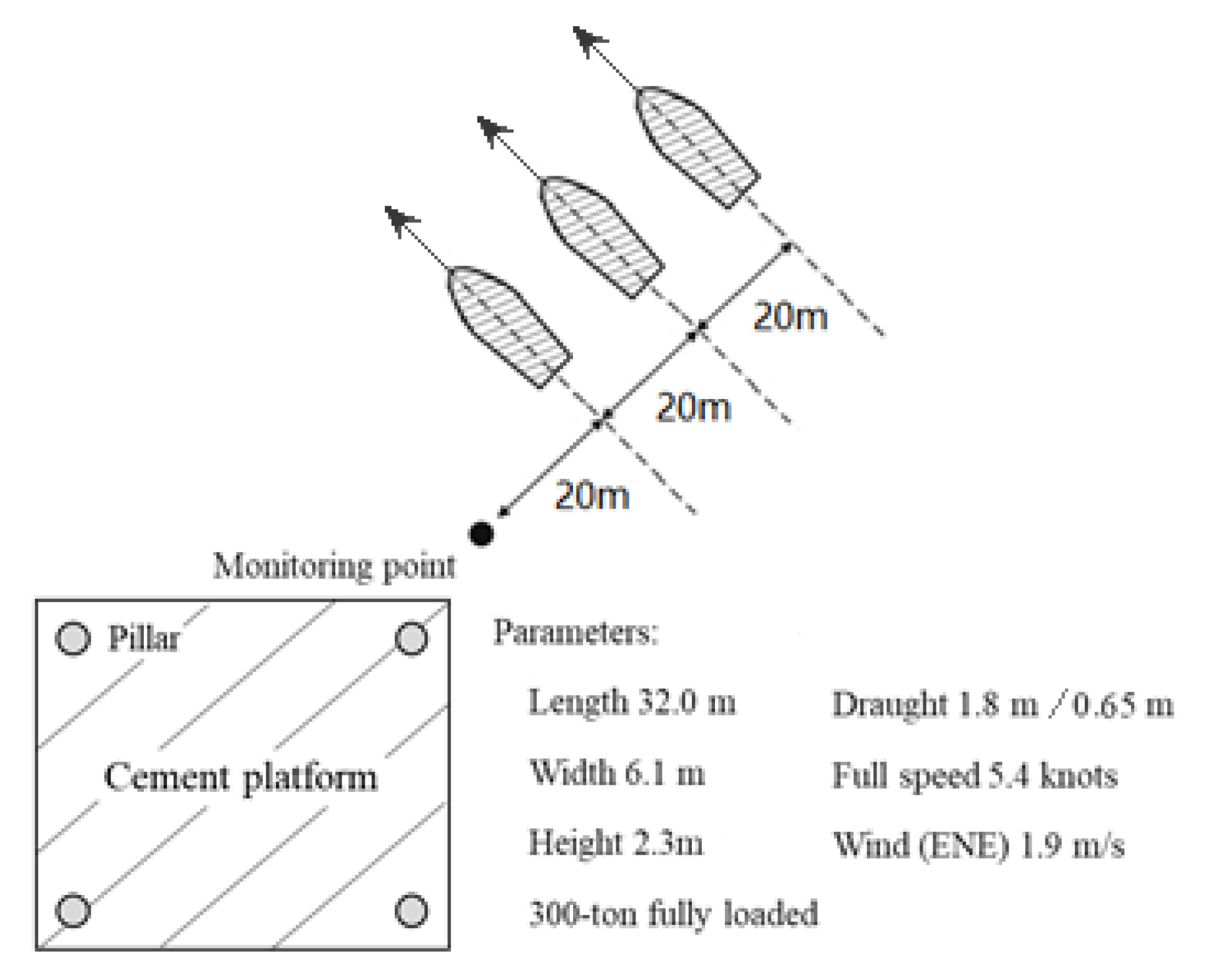
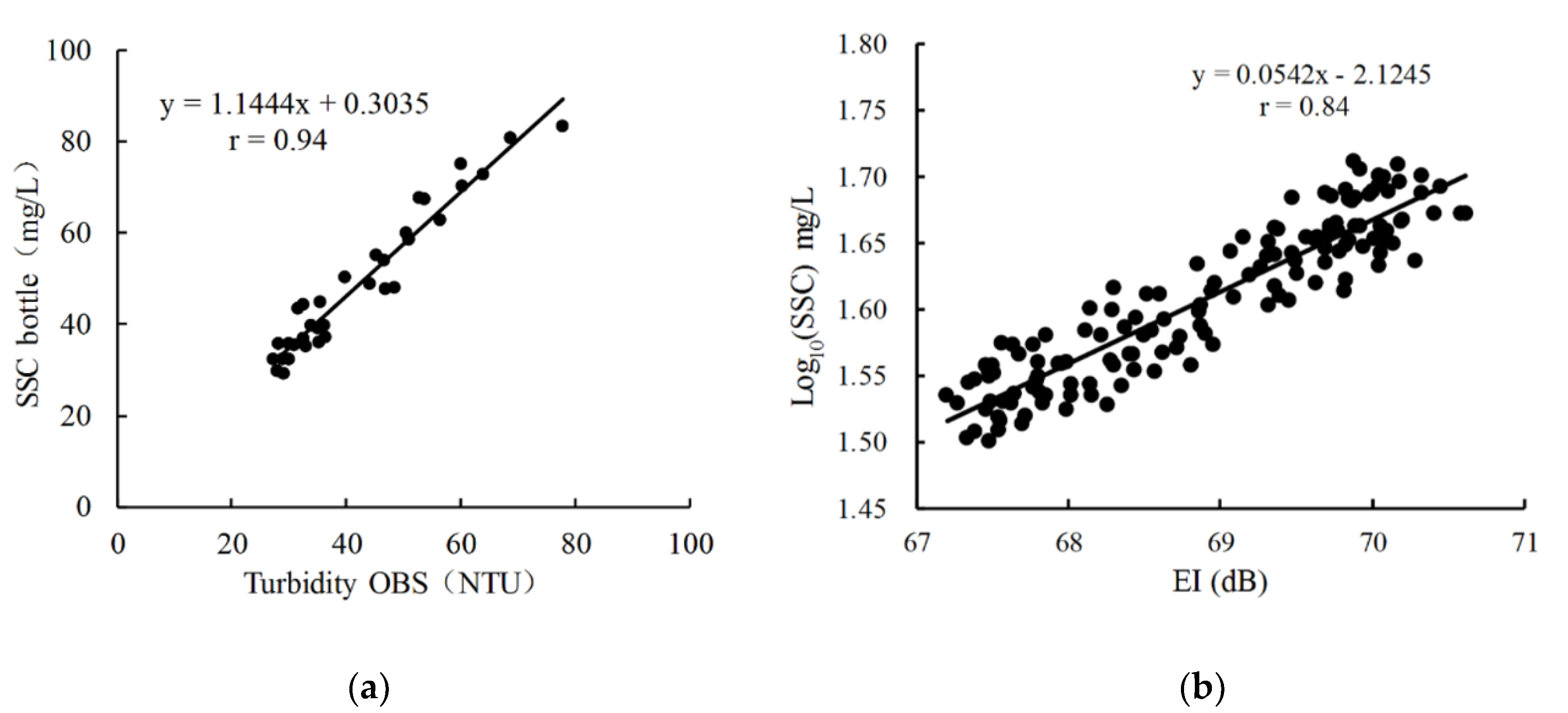
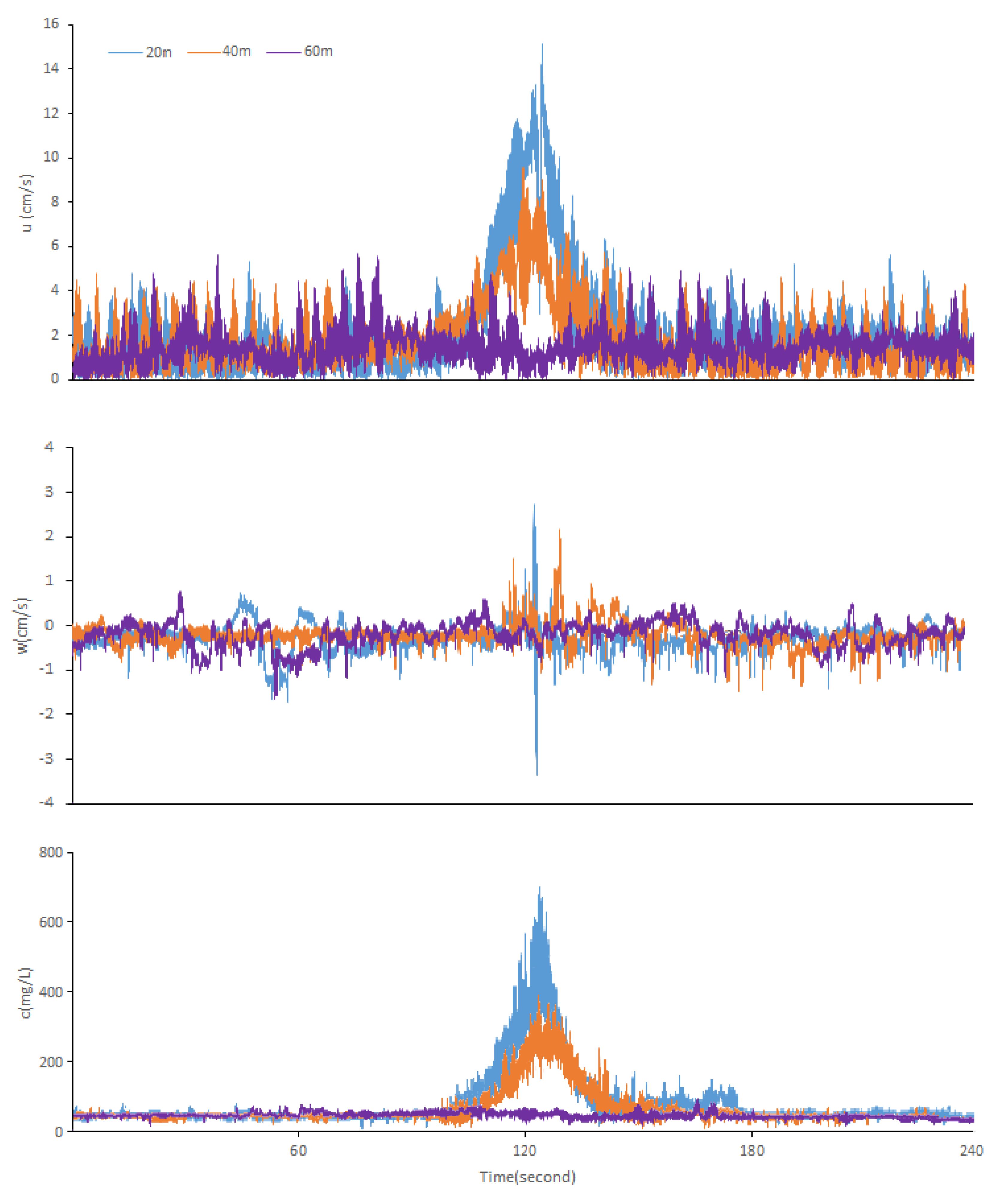
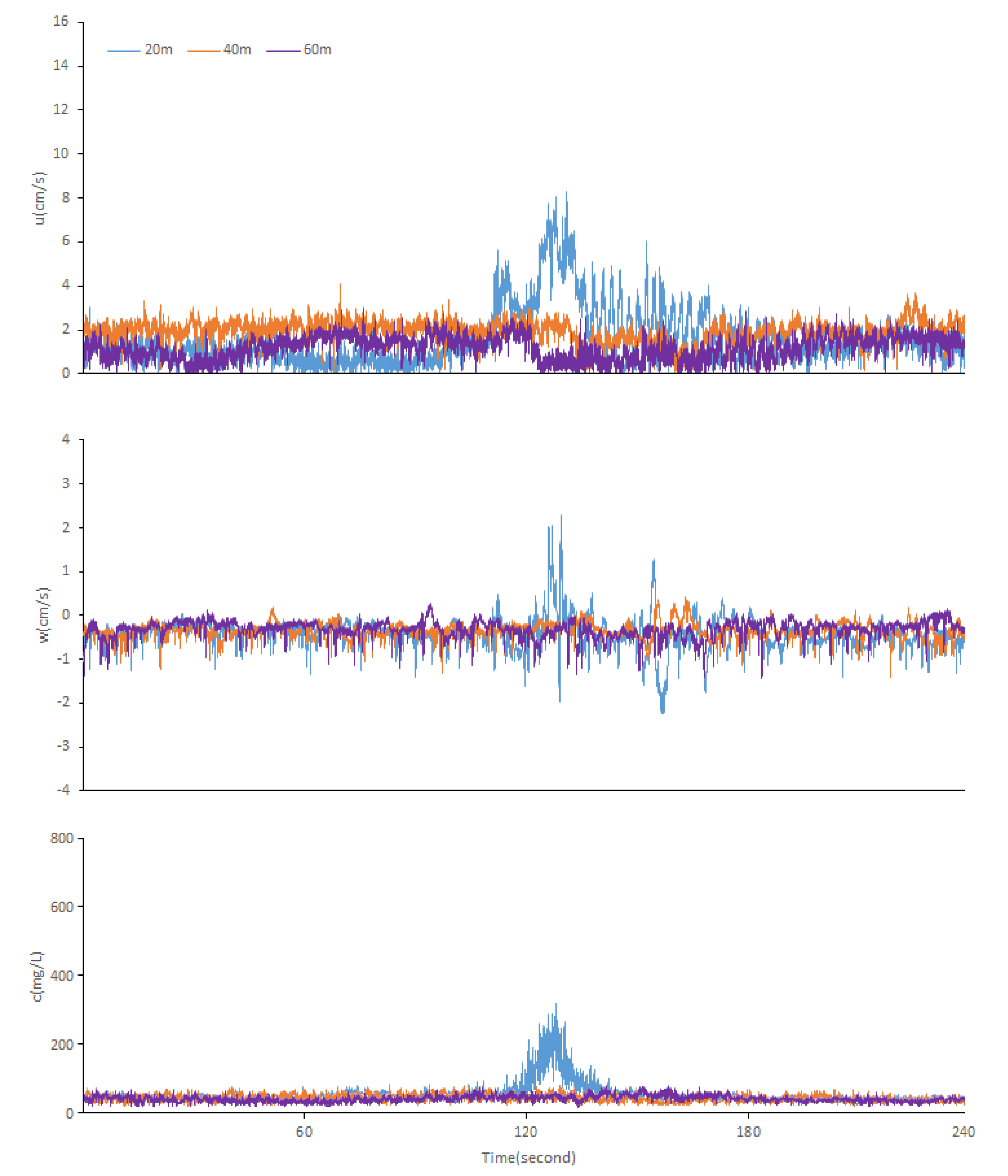
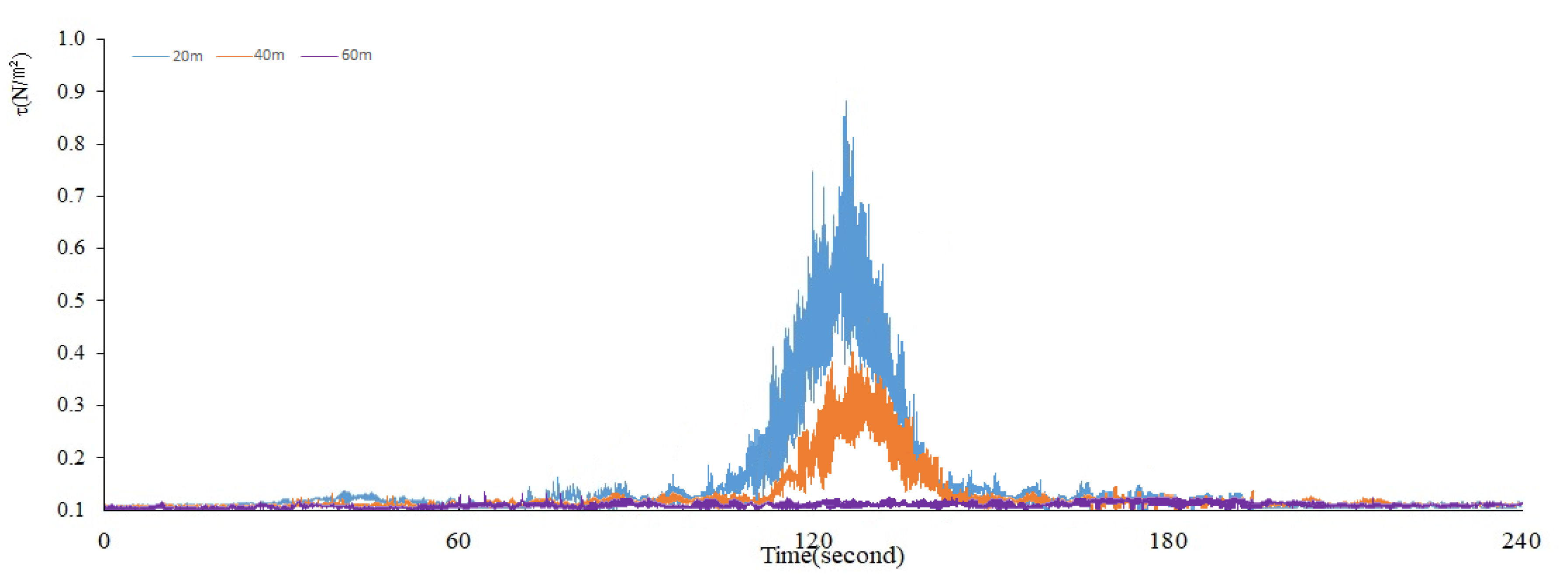
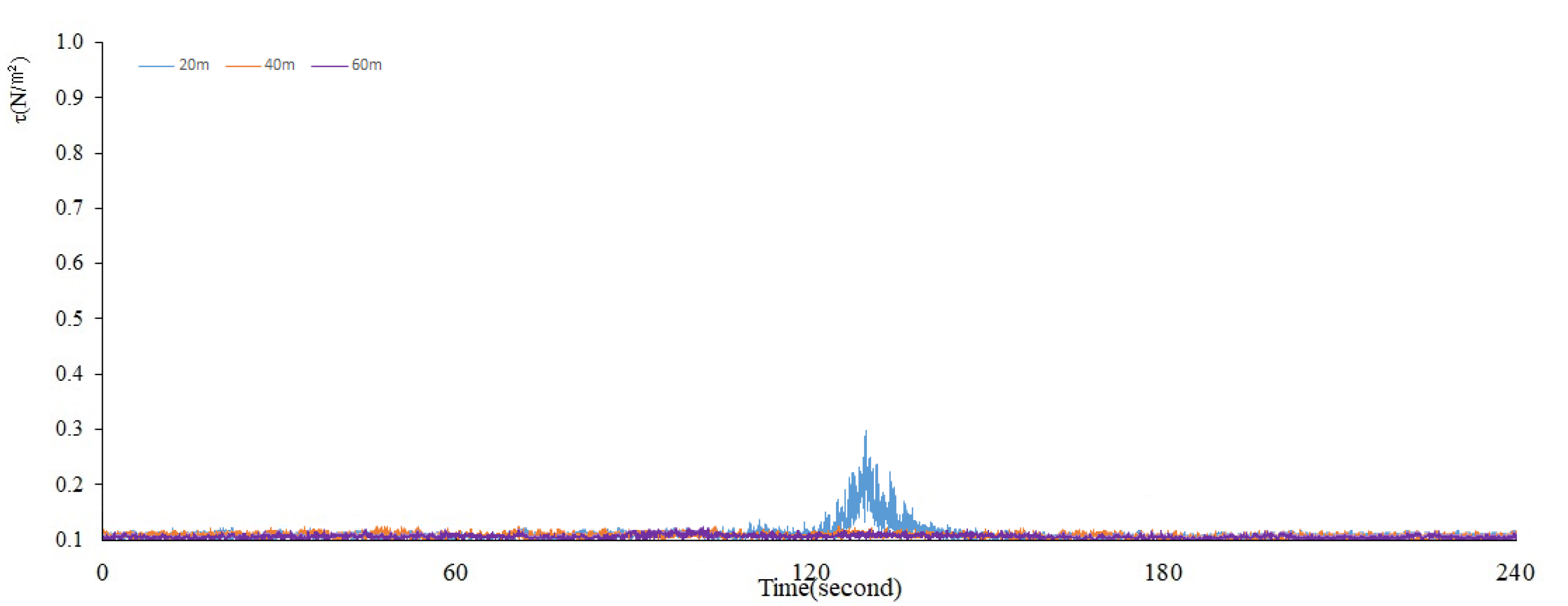

© 2020 by the authors. Licensee MDPI, Basel, Switzerland. This article is an open access article distributed under the terms and conditions of the Creative Commons Attribution (CC BY) license (http://creativecommons.org/licenses/by/4.0/).
Share and Cite
Bu, M.; Li, Y.; Wei, J.; Tang, C. The Influence of Ship Waves on Sediment Resuspension in the Large Shallow Lake Taihu, China. Int. J. Environ. Res. Public Health 2020, 17, 7055. https://doi.org/10.3390/ijerph17197055
Bu M, Li Y, Wei J, Tang C. The Influence of Ship Waves on Sediment Resuspension in the Large Shallow Lake Taihu, China. International Journal of Environmental Research and Public Health. 2020; 17(19):7055. https://doi.org/10.3390/ijerph17197055
Chicago/Turabian StyleBu, Minsheng, Yiping Li, Jin Wei, and Chunyan Tang. 2020. "The Influence of Ship Waves on Sediment Resuspension in the Large Shallow Lake Taihu, China" International Journal of Environmental Research and Public Health 17, no. 19: 7055. https://doi.org/10.3390/ijerph17197055




